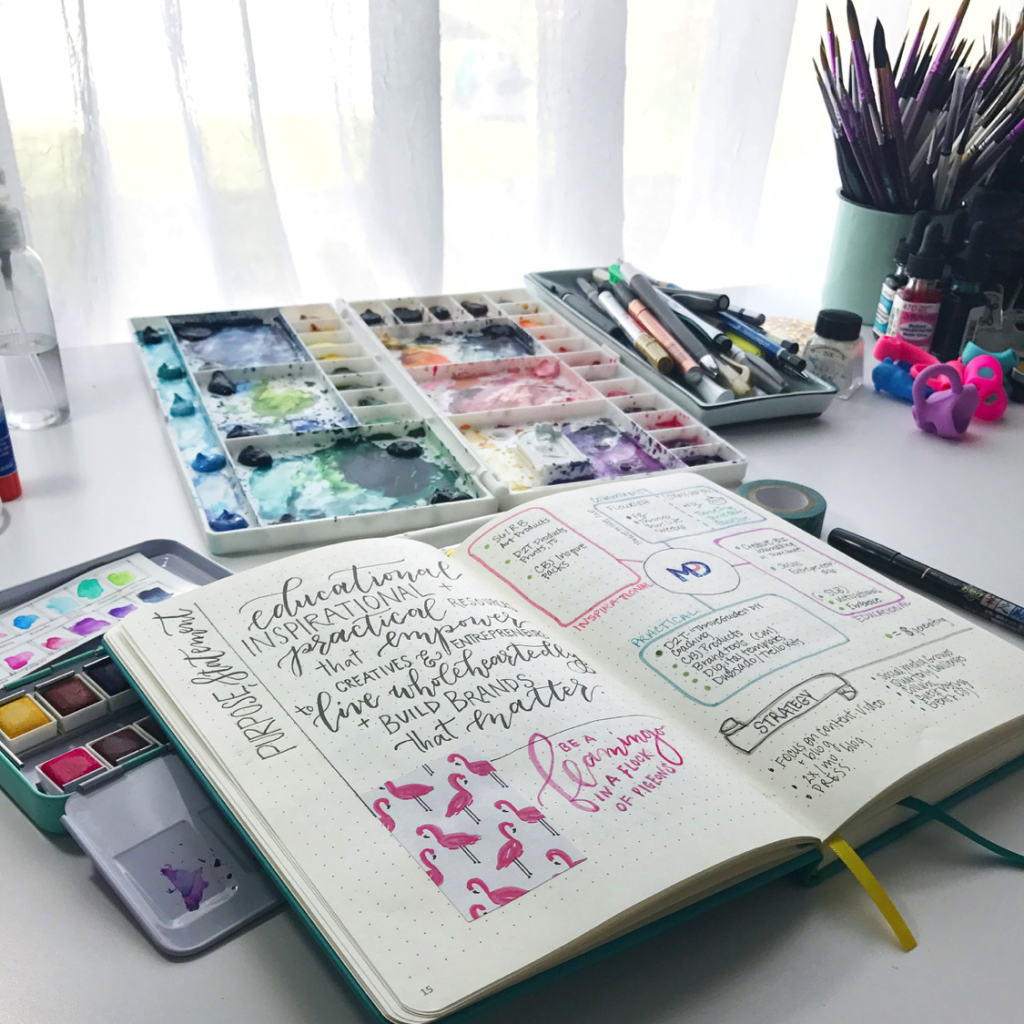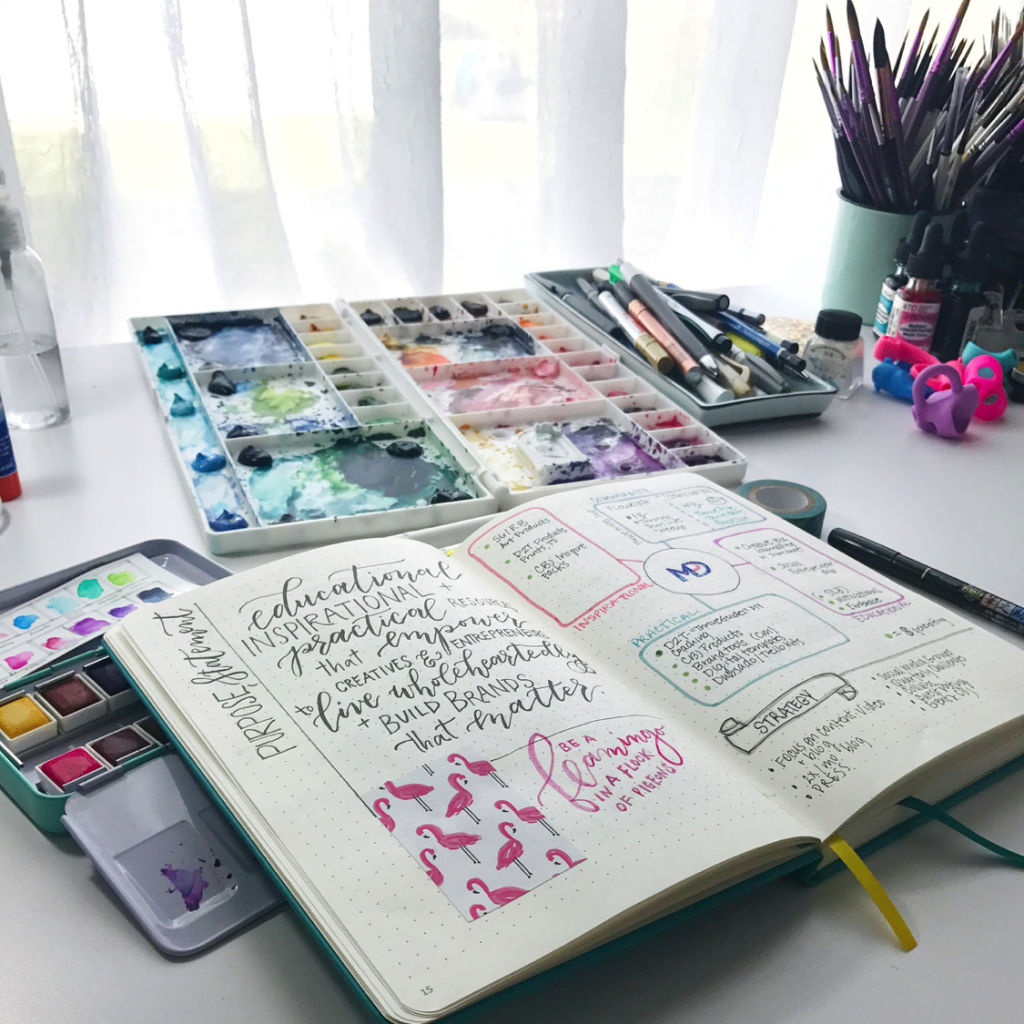
True story—I walked into my MBA-level accounting class and asked my professor if I could color the books instead of balancing them. And I know many of you totally get this (virtual fist bumps). Maybe it’s not surprising that about two-thirds of the way through that particular program, I became an MBA dropout to go rescue kids in Africa.
But the concept of coloring the books instead of just balancing them has never left my head.
Like so many creatives, I’m a visual learner. As such, I began to wonder if there were a way to wrangle all that important MBA-style information and put it in a format designed for those of us who are more comfortable with color charts than calculators.
Good news: there is! But before we break out the paints, bring on all the colors, and pop some bubbly (water, of course), here’s why business strategy and having a business plan is important for your business.
The importance of strategic planning for small businesses
According to a survey done by entrepreneur and business planning expert Tim Berry, having a written business plan doubles your chance of success [1]. Studies have also shown that the real value is found in the process of creating the business plan, not the manner in which the final information is presented [2].
A year ago, this article would have been telling you how to write the scary 60-page-beast of a business plan, because I’m a nerdy word person who likes writing. (Deep breath—I promise that’s not what we are doing.)
However, in January 2018, I was in a severe car crash that left me with a traumatic brain injury that has majorly messed with my words. I went from having writing as a super power to struggling to find even basic everyday vocabulary. I also lost my previous business during the long (and still ongoing) recovery.
This meant that as I planned my business relaunch, I had to get creative about using visual graphics to capture my ideas instead of relying on my usual verbal marathons. The irony is I have a far better grasp of my business now with graphics than I ever did using just words.
How to create a business plan visually
Business plans typically include information about who you are (brand identity and story), who your clients are (target audience), your business landscape (market demographics), your products, your launch and/or growth strategies, your numbers (financials), and any additional information important to your business operations. And yes, I found out that every single one of those areas and business goals can be represented visually.
So grab your favorite beverage, markers, watercolors, and paper, and we’ll get this party started. (You can even borrow your children’s art supplies after they go to bed. It’ll be just between us.)
How to translate your business strategy and concepts visually
- Doodling became my new best friend. Studies have shown doodling keeps you focused, boosts creativity (duh, right?), helps you connect new ideas, and improves memory over traditional note taking [3]. But we’re creatives. We already knew that.
- Instead of thinking about business planning in outlines and paragraphs, I thought about it as a mind map. (If you don’t know what mind mapping is, I’m including a blank template with instructions at the end to help you get started with visual strategic planning for small businesses.)
- I began to view my business plan less as a stale, crusty stack of paper gathering dust in the back of my file cabinet, and more as a living document that could be created in the form of an art journal or sketchbook. It isn’t the document I’d create to wow investors, but it’s a dynamic place to record my research, thoughts, ideas, big crazy dreams, business goals, and project planning. It doesn’t stay the same. It grows with me and tells the story of my business journey.
- I repurpose stencils made for bullet journaling, stickers made for those gorgeous planner systems we all love, and anything else that captures the information in a way that speaks to me.
- I stopped overthinking it. The beauty of this approach is it celebrates both intuition and analysis. It doesn’t have to be either/or, it can be both wholehearted and whole-brained.
Here is a PDF download with one of my favorite exercises to illustrate your business and goal setting on the big picture level, the Business Snapshot™, along with some other suggestions to organize your business planning visually. I can’t wait to see what you create! Please feel free to tag me on Instagram @dmicheleperry if you share and get in touch if you have any questions.
Sources:
[1]https://smallbiztrends.com/2010/06/business-plan-success-twice-as-likely.html
[2]https://www.engagetu.com/2012/11/19/the-value-of-a-business-plan/
[3]https://www.huffpost.com/entry/doodling-benefits_n_7572182
Want to learn more about strategic planning for small business? Get our Ultimate Guide to Strategic Planning for Small Business here.
Plus, 4 more posts you might like:
Creating a Business Strategy That Fits You AND Your Goals
3 Mindset Tips to Jumpstart Your Business Goals in 2019
Charting the Course for Your Creative Venture’s Impact and Business Strategy
Why You’re Going to Finally Write a Business Plan and Achieve Your Business Goals This Year


